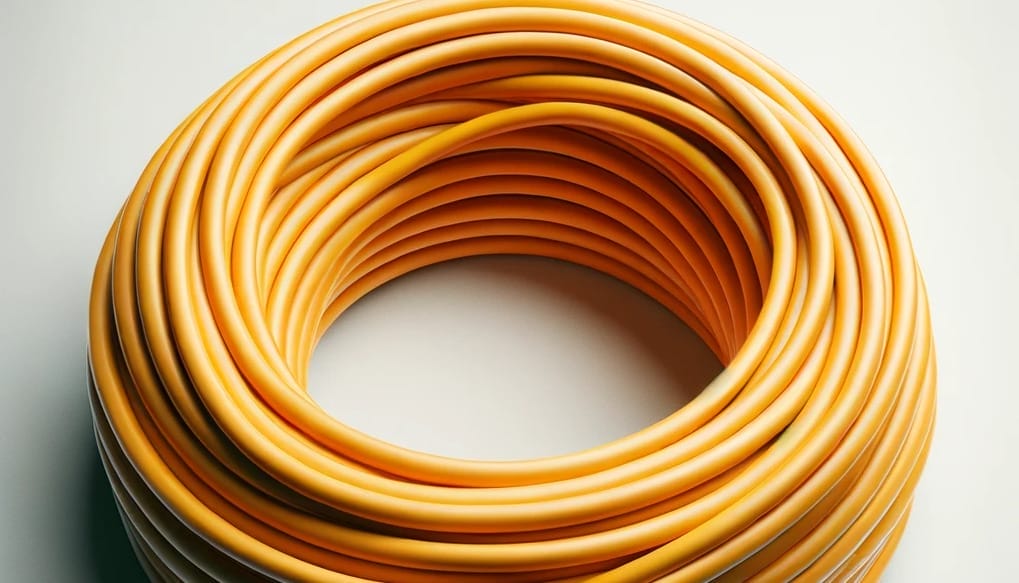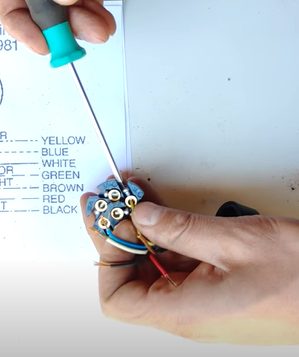How Many Amps Will 10/2 Wire Carry?

If you use a 10/2 wire, how many amps will it carry?
Generally, this type of wire is good for carrying up to 30 amps in most cases, as long as it is made of copper and, depending on its insulation, whether it is encased in a conduit, the length of the wire, and the ambient temperature. It should be treated as the maximum, whereas around 24 amps should be considered the safer normal current capacity for continuous use.
This is a standard household wiring configuration in Canada and the United States for a 10/2 wire (white, black, and bare ground).
Read more about the 10/2 wire and learn about further considerations, including the length of the wire below.
A 10/2 Wire

In specifying a ‘10/2’ wire, the 10 indicates the gauge in AWG, and the 2 indicates the number of insulated conductors in the cable (3 wires in total, including the ground).
From the information in the Wire Gauge Reference Table (AWG), the 10 AWG has a bare diameter of 0.101900” (2.58826 mm), a circular mil area of 10,383.311783 mm, and is equivalent in other wire size systems to 12 SWG and 12 BWG.
Considerations
Type and Length of Wire
Copper wire has very low resistivity, enabling it to handle higher currents more easily than aluminum wire.
If you consider the wire’s length, a 10 gauge copper wire 10 meters long would have a resistance of around 0.032 ohms. The 10/2 wire should be acceptable for appliances within approximately 55 feet of the main breaker panel for a voltage drop not exceeding 3% in a 110V system.
For a 240V system, this length can be doubled, but you will have to use 10/3 wire instead. Consider the voltage drop the appliance can tolerate if you need to wire over a longer distance.
Applications
Some air conditioners, electric laundry dryers, and other appliances that need up to 30 amps can be run safely on 10/2 wiring using a 3-prong plug unless they require 220/240 volts.
The 10/2 wire would not be adequate if connecting, for example, an electric stove (which would need an 8/3 wire). Only in controlled outdoor or industrial situations can a 10/2 wire be used for a little higher current than 30 amps. The 10/2 wire is unnecessary for services controlled by multiple switches, such as lighting on a stairway. You can use thinner wire for them.
Use of a Conduit
A conduit would lower this rating depending on its size and what other wires run alongside it.
In free air, the wire can potentially handle more without overheating. Regardless, the 10/2 wire should be on a 30-amp circuit breaker.
Circuit Breaker and Maximum Load
The 10/2 wire must be protected by a 30 amp circuit breaker or fuse.
30A is the maximum current it can carry. The safer amount for continuous use is 24A.
10/2 wire has the same breaker requirement as a 10/3 wire, normally used for 220-240V appliances. You might think the lower voltage of 110-120 volts means it would be different, but it’s not. Both 10/2 and 10/3 wire have the same requirement of a 30-amp breaker. The only differences are the voltages and wattages they are used for (see the table below).
| Wire | Amps (maximum) | Amps (continuous) | Voltage | Watts (maximum) | Watts (normal) |
| 10/2 | 30 | 24 | 110-120 | 3,600 | 2,880 |
| 10/3 | 30 | 24 | 220-240 | 7,200 | 5,760 |
The maximum wattage load is 2,880 watts for a 120V system (5,760 watts for 240V using 10/3 wire). However, the current should not constantly exceed 80% of the 30 amps, which is 24 amps. It means that although the 10/2 wire can handle up to 30 amps (for a load of 3,600 W), this should be treated as the maximum, whereas around 24 amps (and 2,880 W) is the safer normal current capacity for continuous use.

Frequently Asked Questions (FAQs) about 10/2 Wire
- My new electric oven is a beast! Can 10/2 wire handle it?
- Pump the brakes! For those powerhouse ovens, you’re looking at needing an 8/3 wire. Always skim through your appliance’s user manual—trust me, it’s there for a reason.
- So, there’s a 10/2 and a 10/3 wire—what’s the story there?
- It’s all in the numbers, my friend! The 10/2 has two conductors and a ground. The 10/3? One more conductor, making it perfect for those 220-240V powerhouses.
- The 10/2 wire’s getting a bit warm—should I worry?
- A touch warm can be okay—it’s working, after all. But if it’s hot enough to fry an egg or there’s a suspicious smell? Red flag! Check it out, pronto.
- How often do I need to play detective with my wiring?
- At least once a year, give those wires a once-over. If things start acting wonky—flickering lights or that surprise breaker trip—it’s time to investigate.
- I’m thinking of taking the 10/2 wire outdoors; thoughts?
- Adventure time! But make sure your 10/2 is ready for it—look for wires rated for the great outdoors. They’re built tough against moisture, temperature changes, and that bright sun.
- Why’s the wire length such a big deal?
- Think of it like this: the longer the wire, the more hurdles for our electric current. Keep it within the recommended sprinting distance to ensure your devices get the needed power!
- So, what happens if I go overboard with the amperage on 10/2?
- Too much of a good thing can be bad! Pushing the limits can cause overheating; we don’t want a fire on our hands. Plus, your devices? They won’t be too happy either.
- 30-amp circuit breaker? Why not more?
- It’s like a guardian for your 10/2 wire! If things get dicey and the current shoots up, the 30-amp breaker steps in, trips, and keeps everything safe from a potential meltdown.
- Team Copper vs. Team Aluminum—why’s Copper the household champ?
- Copper’s the star quarterback here! It’s a better player in carrying currents and tough—resisting wear and tear way better than aluminum.
References
Website Resources:
Video References:
Super GEC
